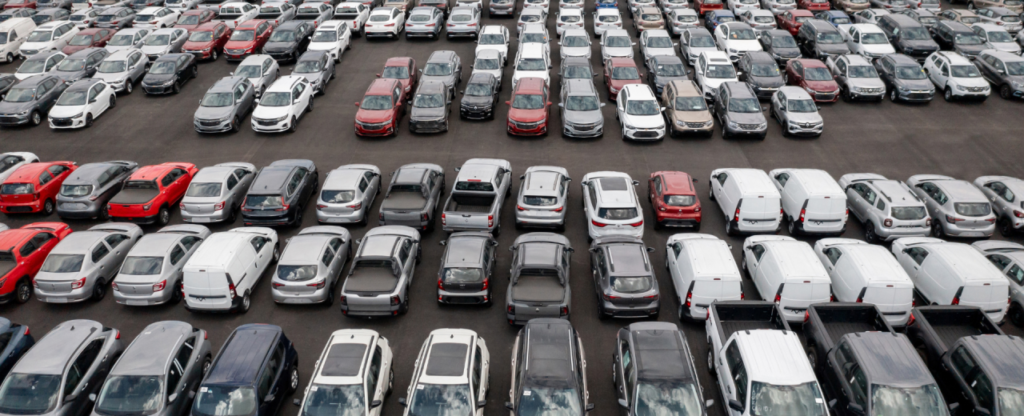India, the world’s fourth-largest car market, has seen remarkable growth over the years, driven by increasing urbanization, a mushrooming middle class, and a shift towards personal mobility. However, the automotive industry in India has been facing significant fluctuations, as recent trends indicate both growth in specific segments and sharp declines in others. The challenges facing the car market are multi-faceted, with factors such as rising fuel costs, changing consumer preferences, supply chain disruptions, and economic pressures playing crucial roles.
One of the key drivers behind car sales in India has been the steady rise in income levels among the urban middle class. Urbanization has fuelled demand for personal vehicles, as many consumers seek greater comfort and convenience in their daily commutes. Traditionally, compact and affordable cars dominated the market due to their cost-effectiveness and fuel efficiency. Maruti Suzuki and Hyundai have long held their stronghold in this segment, with popular models like the Swift, Alto, and i10 catering to first-time buyers and families alike. At the same time, the rapid rise in popularity of Sports Utility Vehicles (SUVs) in recent years has shifted consumer preferences. SUVs, such as the Tata Nexon and Hyundai Creta, offer superior ground clearance, robust designs, and a more commanding road presence, making them the most sought-after category in the market today.
Despite these positive trends in certain segments, India’s car market is currently witnessing a notable slowdown. According to the latest data released by the Society of Indian Automobile Manufacturers (SIAM), passenger vehicle sales in the second quarter of the fiscal year 2025 (FY25) saw a decline of 1.8%, with a total of 10,55,157 units sold. This drop highlights a shift in market dynamics, particularly in the passenger car segment, which declined by a substantial 20%. While SUVs continued to experience growth with a 9% increase year-on-year, the slump in overall passenger car sales raises concerns about the challenges the industry faces. SIAM President Shailesh Chandra noted, “Heavy rainfall in key states, and almost the entire ‘Shradh’ period falling in the month of September, did impact the sales numbers of some of the segments. With the rains easing and continued infrastructure spending, and the arrival of the festive season boosting consumption, we anticipate healthy demand in the next quarter.”
The slowdown in sales isn’t confined to passenger vehicles alone. Commercial vehicle sales have also taken a hit. The sales of goods carriers, which play a crucial role in logistics and supply chains, plummeted by 15.8% in the second quarter of FY25, with 69,514 units sold compared to 82,538 in the same period the previous year. Similarly, light commercial vehicles (LCVs), which serve as essential workhorses for small businesses and rural markets, saw a significant decline of 10.2%. The drop in LCV sales from 1,53,927 units in Q2 FY24 to 1,38,234 units in Q2 FY25 reflects the broader economic challenges impacting the sector.
Several factors are contributing to this downturn in car sales. One of the major challenges is the rising fuel prices in India. Over the past few years, fuel costs have skyrocketed, forcing many consumers to reconsider their decision to buy petrol or diesel-powered vehicles. This has particularly impacted the lower-income groups, for whom fuel expenses form a significant part of their budget. Additionally, inflation and higher interest rates have made car loans more expensive, further discouraging potential buyers. The cost of raw materials such as steel has also increased, leading manufacturers to raise vehicle prices, which has put new cars out of reach for many consumers.
However, amidst the overall decline, there are some positive signs. While passenger cars and commercial vehicles have experienced a downturn, two-wheeler sales have shown resilience. In the second quarter of FY25, scooter sales grew by 16.9%, with 18.32 lakh units sold compared to 15.67 lakh in the same period last year. This growth indicates that while many consumers are shying away from purchasing four-wheelers, two-wheelers, particularly scooters, continue to serve as an affordable and practical mode of transport in both urban and rural areas.
The Indian government’s push towards electric vehicles (EVs) is also expected to play a crucial role in shaping the future of car sales in the country. With increasing awareness of environmental issues and the government’s FAME (Faster Adoption and Manufacturing of Electric Vehicles) scheme, more consumers are gradually warming up to the idea of electric mobility. While EV adoption is still in its nascent stage, falling battery costs, improvements in charging infrastructure, and the introduction of new models by manufacturers like Tata Motors and Mahindra Electric are likely to accelerate the growth of the EV segment.
In conclusion, the car sales landscape in India is currently at a crossroads. The decline in passenger car and commercial vehicle sales in the second quarter of FY25 highlights the challenges the industry faces, from economic pressures and supply chain disruptions to rising fuel prices. However, the growth in the SUV segment, the resilience of two-wheeler sales, and the potential of electric vehicles provide optimism for the future. As consumer preferences evolve and the market adjusts to new realities, the Indian automobile industry is likely to see significant transformations in the years to come.

